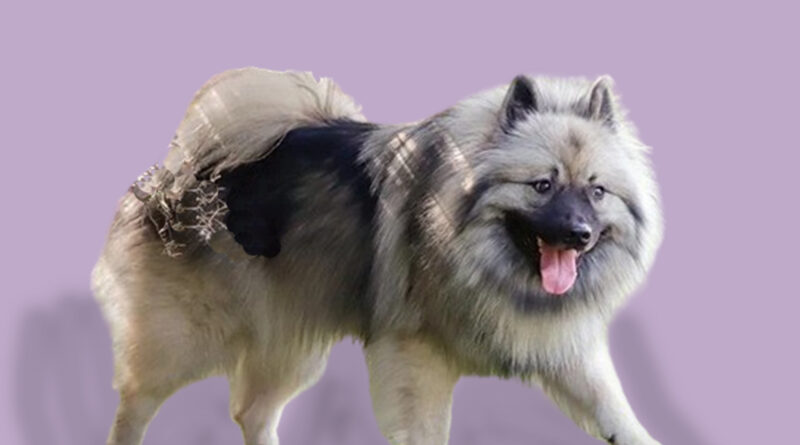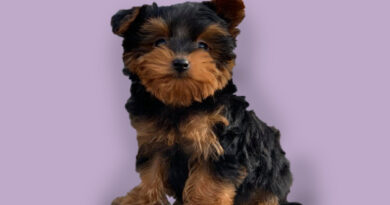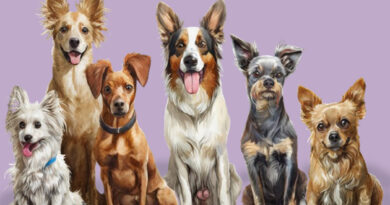The Ultimate Guide to Keeshond Puppies : Everything You Need to Know
What is the history of Keeshond breed? The interesting history of the Keeshond Puppies, sometimes known as the “Smiling Dutchman,” is intertwined with the breathtaking scenery of the Netherlands. These unusual canines have been an integral part of Dutch life since the 18th century, particularly when they were pals and guards on canal ships. Cornelius (Kees) de Gyselaer, a well-known Dutch Patriot Party leader from the 18th century, is the source of the name “Keeshond”. Because of the Keeshond, the group was referred to as “Kees’s dogs” or Keeshonden. These adorable pups delighted canal boatmen and merchants, as well as Dutch waterway passengers. They were vigilant guardians, warning their masters of any hazards in the canal. Because of this dual role, they were renowned for their cunning, devotion, and unwavering dedication to mankind.

Keeshond Puppies are a sign of tenacity and the close bond between people and dogs. Their rich past demonstrates how they evolved from canal boats in Holland in the eighteenth century to cherished family members all around the world. The Keeshond Puppies history endures because of its timeless appeal.
Keeshond Puppies breed, with their distinctive foxlike appearance and luxurious coat, have won hearts for many years. These spritz-type dogs, who are native to the Arctic, are renowned for their intelligence, agility, and gentle nature. This post will guide you through everything you need to know if you’re thinking of bringing a Keeshond puppy into your home, from choosing the right puppy to making sure your new pet has a happy and healthy life.
Selecting the Ideal Keeshond Puppies
It’s important to take into account trustworthy breeders who put their dogs’ health and wellbeing first when choosing a Keeshond Puppies. Seek out breeders who have a thorough awareness of the breed criteria and who provide their puppies a clean, caring home. Furthermore, make sure the puppy’s parents have undergone screening for common genetic disorders by requesting health clearances.
Since Keeshond Puppies are known for having gregarious and extroverted personalities, you can choose a puppy that fits your lifestyle by observing the behavior of the litter. A Keeshond puppy that has been socialized well should be energetic, inquisitive, and eager to interact with both people and other animals.
Taking Care of Your Puppy Keeshond
After bringing your Keeshond Puppies home, it’s critical to establish a loving and secure environment. These dogs are social creatures, so make time to spend quality time getting to know your new pet. How do I groom a Keeshond puppy? Establish a feeding, brushing, and exercise schedule to guarantee a contented and well-mannered Keeshond Puppies.
1. Food:
A well-rounded and nourishing food is essential for the growth and development of Keeshond Puppies breed. Select premium puppy food that is tailored to the demands of the breed and keep an eye on your pet’s weight to avoid obesity, which is a typical problem with Keeshonds.
2. Maintaining grooming
The double coat of the Keeshond needs to be groomed frequently to minimize shedding and avoid matting. At least twice or three times a week should be spent brushing your puppy’s coat; during shedding seasons, this should be increased. Keeshonds may also be more susceptible to dental problems, so be mindful of dental hygiene.
3. Practice:
Keeshonds are an active breed that love strenuous activity, despite their fluffy appearance. It’s important for their health to have regular exercise, so include mentally challenging games, playdates, and daily walks in their schedule.
How to Train a Puppy Keeshond
Keeshond Puppies are clever canines that react favorably to training techniques based on positive reinforcement. Start training as soon as possible to help your puppy develop positive behavior patterns and improve your relationship.
1. Fundamental Orders:
Begin with simple instructions like sit, remain, and come. Treats, affection, and praise can be used as incentives for good behavior.
2. Getting Along:
To guarantee that your Keeshond Puppies develops into a confident, well-adjusted adult, expose them to a variety of situations, people, and other animals. The key to preventing shyness or fearfulness is early socializing.
3. Continuity:
To prevent misunderstandings, be clear about expectations and rules. Keeshonds will respond favorably to a consistent training method and will flourish in a structured setting.
Health Concerns for Puppies of the Keeshond Breed
1. Screening for Genetics:
Keeshond Puppies might be more susceptible to specific inherited diseases. Genetic testing are carried out by ethical breeders to detect possible health hazards.
Make it a top priority to get your Keeshond from a reliable breeder who tests for degenerative retinal atrophy, patellar luxation, and hip dysplasia.
2. Immunizations:
Adhere to your veterinarian’s suggested immunization regimen in order to shield your Keeshond puppy from frequent dog illnesses.
Protection against rabies, parvovirus, adenovirus, and distemper is usually provided by vaccinations.
3. Nutrition and Diet:
Feed your Keeshond Puppies a food that is age- and well-appropriate and well-balanced to help its growth and development.
Steer clear of overfeeding and keep an eye on their weight to avoid health problems linked to obesity.
4. Frequent visits to the vet:
Arrange for routine veterinary examinations to keep an eye on your puppy’s general health and identify any possible problems early.
Talk about your veterinarian about immunization schedules, preventative measures against parasites, and dental care.
5. Preventing Parasites:
Adopt a routine parasite prevention program to keep your Keeshond free of worms, fleas, ticks, and other parasites.
See your veterinarian for advice on appropriate treatments and preventive measures.
6. Dental Health:
Introduce teeth brushing and give appropriate dental chews or toys to establish a routine for oral care early on.
Periodontal disease and other dental problems can be avoided with regular dental care.
7. Exercise and Cognitive Excitation:
Keeshond Puppies breed are highly active and need frequent exercise to stay physically well.
Training sessions and interactive toys provide mental stimulation, which is essential for their cognitive development.
8. Neutering/spaying:
Talk to your veterinarian about the ideal age for spaying or neutering.
– Unwanted behaviors and some health problems can be avoided by spaying and neutering.
9. Getting Along:
To encourage good socialization, expose your Keeshond puppy to a variety of settings, people, and animals.
Early socializing helps the Keeshond become a confident, well-adjusted adult.
10. Care for the Eyes and Ears:
Regularly examine your puppy’s eyes and ears for anomalies or indications of infection.
Cleanse ears as necessary, and if you observe any redness, swelling, or discharge, contact a veterinarian.
You may create the conditions for a Keeshond Puppies to grow up healthy, happy, and well by attending to these health-related issues. A healthy diet, a caring environment, and routine veterinarian treatment all contribute to their general well-being.
Breed Temperament of Keeshonds
What is the temperament of Keeshond breed? Keeshonds are known for their captivating personalities, which make them interesting housemates in addition to being visually stunning. The secret to building a solid relationship with these amiable dogs is getting to know the subtleties of their personalities.
1.Warm and Companionable
Keeshond Puppies are naturally loving and sociable animals that like human company. They are renowned for their amiable disposition and develop close relationships with their families. Keeshonds enthusiastically seek out the companionship of their loved ones, whether it’s for family activities or just relaxing on the couch.
2.Astute and Vigilant
Keeshond Puppies are intelligent, quick learners that exhibit a level of awareness that makes them great watchdogs. Being attentive of their surroundings is ingrained in them, and they will quickly warn their owners of any potential risks. They are also teachable due to their intrinsic intellect, yet they could need constant, encouraging reinforcement due to their independence.
3.Dedicated and Faithful
Keeshond Puppies develop close bonds with their human family members due to their innate loyalty. Their unwavering dedication makes them an indispensable member of the family. In addition to being devoted, Keeshonds are also prone to be protective of their families, sticking by them and providing solace when necessary.
4.amiable toward kids and other pets
Families with kids will find the gentle nature of the Keeshond to be ideal. They build close relationships with younger family members and are tolerant and patient. They also generally get along well with other pets, which makes them a peaceful addition to homes with several pets.
5.Instruction and Interaction
Keeshond Puppies can be independent thinkers despite their intelligence and desire to please. In order to guarantee that kids develop into well-mannered adults, early socialization and positive reinforcement training are essential. Introducing them to different people, places, and experiences aids in the development of a self-assured and well-mannered Keeshond.
6.spirited and playful
Keeshonds are ideal for active families because of their fun and vivacious personalities. In order to keep children mentally and physically occupied, regular exercise is necessary, such as walks and playtime. You can constructively channel their enthusiasm by taking part in exercises like agility or obedience training.
The Price Range of a Puppy Keeshond
What is the price range for a Keeshond puppy? A Keeshond puppy’s cost can change depending on a number of variables, including breeder repute, geographic location, and pedigree. A Keeshond puppy will typically cost you between $800 and $2,000. Vaccinations, microchipping, and a health guarantee are frequently included in the cost by reputable breeders. To protect your future pet’s health and wellbeing, it’s imperative that you conduct in-depth research and select a reputable breeder.
How to Take Care of a Puppy Keeshond
Maintaining the health and attractiveness of a Keeshond’s characteristic double coat requires regular grooming. Whether you are an experienced aficionado or a first-time owner, knowing what these fluffy friends require in terms of grooming is crucial for their overall health.
1. Typical Brushing Schedule:
Keeshonds have a dense double coat that needs to be brushed frequently to avoid tangles and matting. Brushing should be done at least twice or three times a week for Keeshonds, and more frequently during shedding seasons. A comb or slicker brush with wide and narrow teeth works best to go under the thick fur, pull out any stray hairs, and stop matting.
2. Schedule for Bathing:
Strong canine odors are not common in keeshonds, and frequent washing might deplete the natural oils in their coat. Whenever necessary, try to give your Keeshond a bath every two to three months. For a clean and healthy coat, use a premium dog shampoo. Make sure you rinse well to get rid of any residue that could lead to matting.
3. Dental Health:
Good oral hygiene is essential to general health. Create a consistent dental care schedule for your Keeshond by using toothpaste and a toothbrush that is safe for dogs a few times a week. Toys or dental chews can also help to keep teeth healthy.
4. Cleaning Ears:
Since keeshonds are prone to ear infections, it’s important to clean your ears often. Every week, look for any symptoms of redness, swelling, or bad smell coming from their ears. To gently clean the ears, use a cotton ball and an ear cleaner authorized by your veterinarian. Avoid introducing anything into the ear canal.
5. Trimming nails:
To avoid pain and preserve healthy foot structure, regular nail trims are crucial. Nail trims are recommended for Keeshonds every 2-4 weeks, or as needed. Seek advice from a professional groomer or your veterinarian if you have any questions regarding the procedure.
6. Shedding Seasonally:
Keeshonds shed periodically, usually in the spring and fall. In order to get rid of loose fur and lessen shedding throughout the house, brush more frequently throughout these periods. This reduces the chance of matting and aids in coat maintenance.
7. Overview of Grooming
In order to adapt your Keeshond puppy to the process, begin grooming routines early in their life. Encourage enjoyable experiences during grooming sessions by providing small breaks, praise, and treats. This encouragement fosters trust and adds enjoyment to the grooming process.
By adding these grooming techniques into your routine, you’ll support your Keeshond’s general health and wellbeing in addition to keeping them looking their best. Frequent grooming keeps your Keeshond comfortable, content, and a pleasure to have in your household, all while strengthening your relationship with them.
Life Expectancy of Keeshond Breed
Compared to many other dog breeds, schnauzers have an exceptionally long lifetime, which is attributed to their stunning looks and loving disposition. How Long Does a Keeshond Breed Typically Live? It is crucial to comprehend the elements that prolong their life in order to give your pet the greatest care and guarantee a happy and healthy existence.
1. Breeding and Genetics:
A Keeshond’s lifespan is mostly determined by genetics and breeding techniques. Breed health and wellbeing are of utmost importance to conscientious breeders, who do health examinations to reduce the likelihood of inherited disorders. The possibility that your Keeshond will live a longer and healthier life is increased if you choose a respectable breeder who follows moral breeding procedures.
2. Nutrition and Diet:
The general health and longevity of a Keeshond are highly dependent on proper nutrition. Give your dog a premium, well-balanced diet that is suitable for their size, age, and amount of exercise. Frequent veterinarian examinations may assist guarantee that your Keeshond is receiving the nutrients they need and can detect any dietary changes that may be necessary as they become older.
3. Exercise and Cognitive Excitation:
Maintaining a healthy weight and avoiding health problems associated with obesity need regular exercise. Since kelpiends are an active and playful breed, regular activities like walks, playtime, and mental stimulation are beneficial to their physical and emotional health. Sufficient exercise also keeps your Keeshond in peak condition and helps avoid behavioral problems.
4. Vaccinations and Veterinary Care:
Early detection and treatment of health disorders are made possible with routine veterinarian care. The general health and lifespan of your Keeshond are influenced by routine examinations, vaccines, and preventive measures that are advised by your veterinarian. As dental issues can have an impact on your pet’s overall health, take preventative measures to keep their teeth in good condition.
5. Dimensions and Duration:
Keeshonds are a medium-sized breed, and usually, smaller breeds tend to have longer lifespans compared to larger breeds. Even though every person is different, giving them the right care might extend their life. Although some may live longer with appropriate care, keshoffnds normally have a lifespan of 12 to 15 years.
6. Surroundings and Standard of living:
A Keeshond’s longevity may be influenced by its surroundings. A caring home setting, safety from inclement weather, and a secure living area all contribute to their general well-being. A happy and contented life requires equal attention to their mental health through social connection and mental stimulation.
7. Conscientious Ownership:
A key factor in determining a Keeshond’s lifespan is the owner’s dedication and accountability. A happy and long life is facilitated by showing them affection, giving them attention, and attending to their bodily and emotional requirements. Appropriate care for your pet entails getting veterinarian care as soon as a health issue occurs.
What is the average lifespan of a Keeshond breed? a Keeshond’s typical lifespan is influenced by a variety of factors, including genetics, diet, activity, veterinarian treatment, and responsible ownership. By putting your Keeshond’s health first and attending to their individual needs, you can improve their quality of life and have many happy years together.
Conclusion
Keeshond Puppies breed are wonderful companions for both individuals and families. You may build a lifetime relationship with your furry pet by choosing a reliable breeder, giving them the care they need, and using positive reinforcement training. Always remember that love, care, and a dedication to their welfare are the keys to a happy and healthy Keeshond.
FAQS (Frequently Asked Questions)
Do Keeshond bark a lot? Can Keeshond be left alone?
Indeed, keshoffunds are known to be boisterous and have a tendency to bark frequently, particularly when they are agitated. They enjoy closeness even though they may spend reasonable amounts of time alone, so it’s important to give them psychological stimulation and keep them from being alone for long periods of time.
How long does Keeshond live for?
The average lifespan of the Keeshond Puppies breed is 12 to 15 years. Their general longevity is influenced by proper nutrition, regular veterinary check-ups, and proper care.
Can Keeshond live in hot weather?
Keeshonds may suffer in intense heat and prefer colder regions. It’s critical to offer plenty of shade, stay hydrated, and stay out of the sun for extended periods of time.
At what age is a Keeshond full grown?
Keeshonds usually attain adult size by the time they are one to one and a half years old. However, during the course of the next year or two, behavioral and mental maturity might continue to grow.
Is Keeshond a working breed?
The Keeshond was initially employed as a watchdog on Dutch barges, therefore yes, it is regarded as a working breed. They are renowned for their adaptability, intelligence, and agility in a variety of settings.
What illnesses do Keeshond have?
Keeshonds may have progressive retinal atrophy and hip dysplasia. A balanced diet, preventive treatment, and routine veterinary exams can help keep their health under control.
Is it OK to shave a Keeshond?
Shaving a Keeshond is usually not advised because of their double coat, which offers protection and insulation. Shaving may disturb their coat’s regeneration and cause skin problems by interfering with their natural cooling and insulation systems.
Where is Keeshond from?
The political figure Kees de Gyselaer, who supported the breed during the 18th-century Patriot political movement, is the name of the Keeshond, often referred to as the Dutch Barge Dog, which has its origins in the Netherlands. On Dutch boats, they were frequently employed as watchdogs and companions.
What dog is similar to a Keeshond?
The Keeshond and Finnish Lapphund are similar in that they both have fluffy double coats and amiable, watchful personalities. Both breeds are renowned for their companionship and herding abilities.
What color is a Keeshond coat?
A Keeshond’s coat is usually a tricolor of cream, black, and gray, and it has characteristic markings on its face and “spectacles” that give it a fox-like look. The breed needs frequent maintenance due to its thick, luxurious double coat.





Pingback: Top 10 Medium Fluffy Dog Breeds That Will Melt Your Heart (2024) - Feast Fido